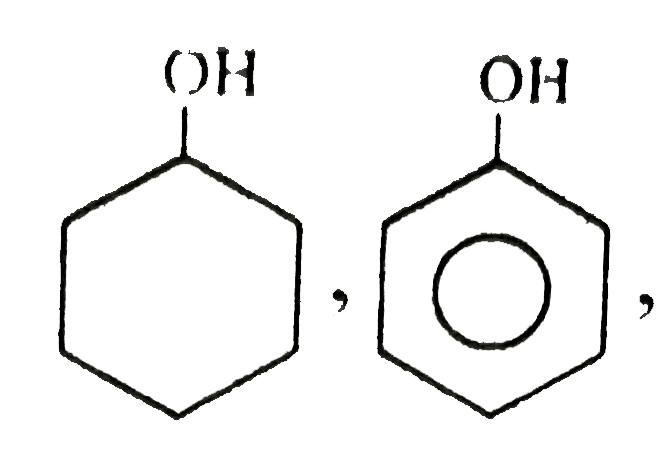Record the following sets of compounds according to increasing pKa(=−logKa)
(a).  cyclohexane carboxylic acid
cyclohexane carboxylic acid
(A). 3<2<1
(B). 3>2>1
(C). 1<2<3
(D). 3<1<2
(b). 1-butyne, 1-butene, butane
(A). 3<2<1
(B). 3<2<1
(C). 1<3<2
(D). 3<2>1
(c). Propanoic acid, 3-bromopropanoic acid, 2-nitropropanoic acid
(A). 3lt2lt1
(B). 3gt2gt1
(C). 1lt2lt3
(D). 3lt1lt2
Video Solution
Text Solution
The correct Answer is:(a)A, (b)A, (c)A
(c). Acidic strength α.Ka∝1pKa
|
Topper's Solved these Questions
- GENERAL ORGANIC CHEMISTRYBOOK - BANSALCHAPTER - GENERAL ORGANIC CHEMISTRYEXERCISE - Exercise 2
38 Videos
- D AND F BLOCK ELEMENTSBOOK - BANSALCHAPTER - D AND F BLOCK ELEMENTSEXERCISE - EXERCISE-4 (SECTION-B)
7 Videos
- NITROGEN COMPOUNDSBOOK - BANSALCHAPTER - NITROGEN COMPOUNDSEXERCISE - EXERCISE-4 (Section-4) SECTION -B( JEE Main Previous Question )
5 Videos
Similar Questions
Knowledge Check
The following sentences are the steps involved in solving 4−3x<5.
Arrange them in sequential order,
(A) −3x<1
(B) −x<1/3
(C) −3x<5−4
(D) x>−1/3AABCDBBCADCCABDDCADBWhich of the following is(are) correct for H atom?
(i) 1s<2s<2p<3s<3p
(ii) 1s<2s=2p<3s=3p
(iii) 1s<2p<3d<4s
(iv) 1s<2s<4s<3d
The correct choice isA(ii), (iii)B(i), (iv)C(i), (iii)D(ii), (iv)The solution set of the inequation −32<1
A{x/x<−52}B{x/x>−52}C{x/x≤52}D{x/x≤−52}
Prove that 25<log103<12.
View SolutionInterpret the following locii in z∈C.
1<|z−2i|<3
View SolutionThe values of a which make the expression x2−ax+1−2a2 always positive for real values of x are- A. −23<a<23 B. −23≤a≤23 C. −23≤a≤1 D. 0<a<23
View SolutionWrite increasing order of basic strength of following:
(i). (a) Fɵ, (b). Clɵ, (c). Brɵ, (d). Iɵ
(A). a>b>c>d
(B). d<a<c<b
(C). d>a>b>c
(D). a>d>c>b
(ii). (a). CHɵ3, (b). Clɵ, (c) OHɵ, (d). Fɵ
(A). a>b>c>d
(B). d<a<c<b
(C). d>a>b>c
(D). a>d>c>b
(iii). (a). R−NH2, (b). Ph−NH2, (c). R−C∣∣O−NH2
(A). a>b>c
(B). a<c<b
(C). a<b<c
(D). a>c>b
(iv). (a). NH3, (b). MeNH2, (c). Me2NH , (d). Me2N
(A). a<b<c<d
(B). d<a<c<b
(C). d>a>b>c
(D). a>d>c>b
View Solution0<|x−1|<3
View Solution
